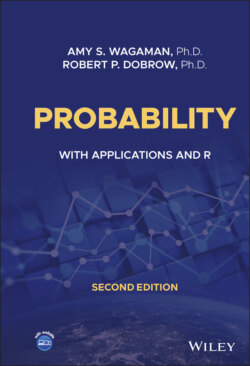Читать книгу Probability - Robert P. Dobrow - Страница 23
PROPERTIES OF PROBABILITIES
Оглавление1 If implies , that is, if , then
2
3 For all events and ,(1.3)
Each property is derived next.
1 As , write as the disjoint union of and . By the addition rule for disjoint events,because probabilities are nonnegative.
2 The sample space can be written as the disjoint union of any event and its complement . Thus,Rearranging gives the result.
3 Write as the disjoint union of and . Also write as the disjoint union of and . Then and thus,Observe that the addition rule for mutually exclusive events follows from Property 3 because if and are disjoint, then .
Example 1.8 In a city, suppose 75% of the population have brown hair, 40% have brown eyes, and 25% have both brown hair and brown eyes. A person is chosen at random from the city. What is the probability that they
1 Have brown eyes or brown hair?
2 Have neither brown eyes nor brown hair?
To gain intuition, draw a Venn diagram, as in Figure 1.2. Let be the event of having brown hair; let denote brown eyes.
1 The probability of having brown eyes or brown hair isNotice that and are not mutually exclusive. If we made a mistake and used the simple addition rule , we would mistakenly get
2 The complement of having neither brown eyes nor brown hair is having brown eyes or brown hair. Thus,
FIGURE 1.2: Venn diagram.
